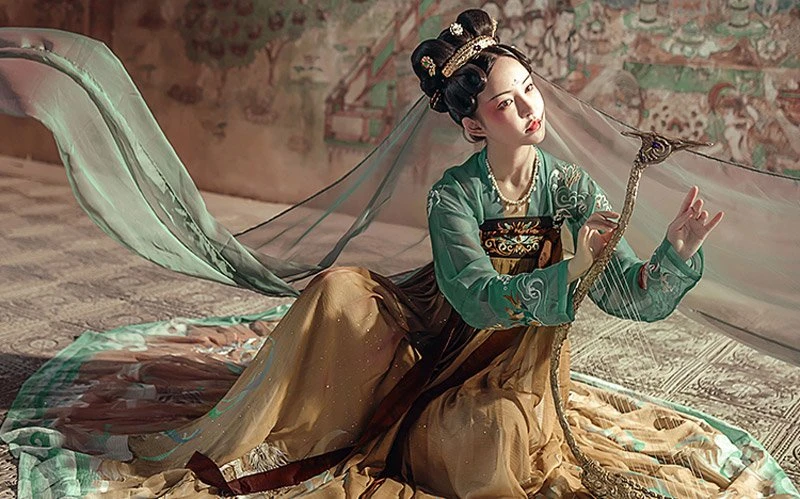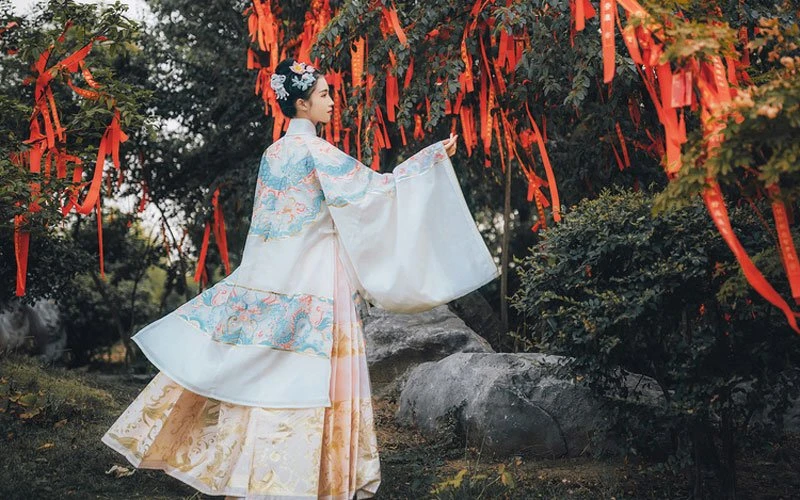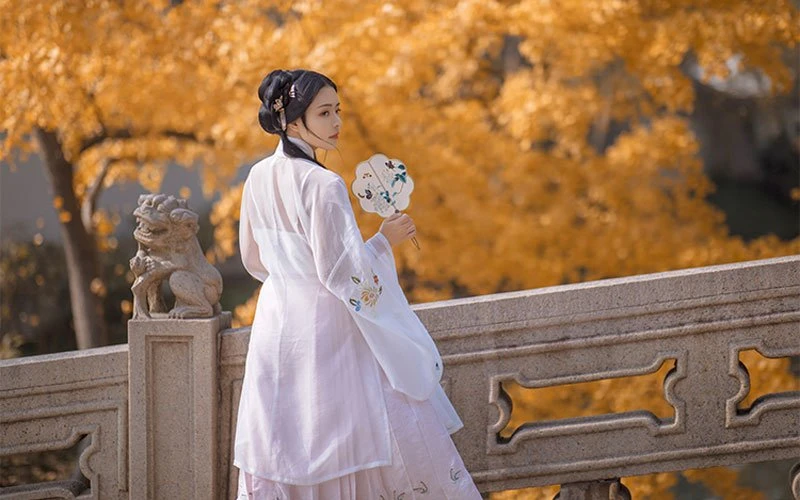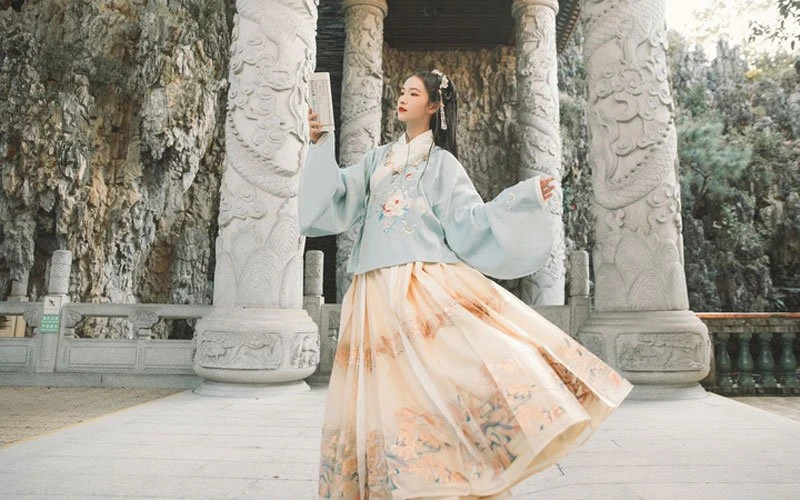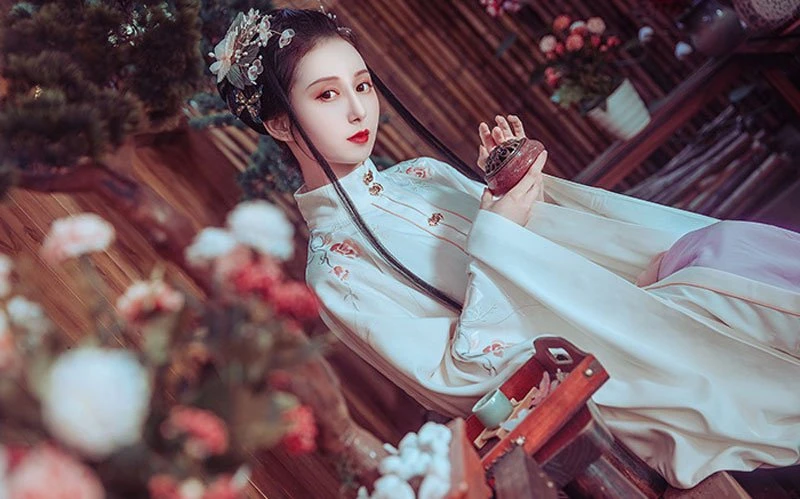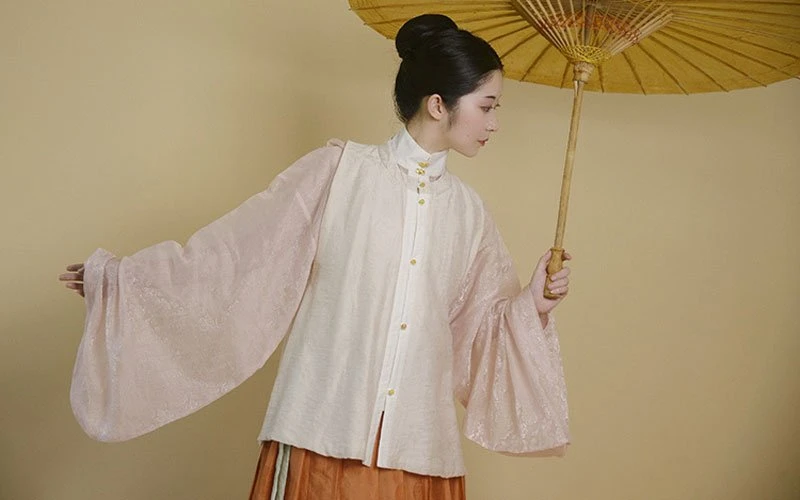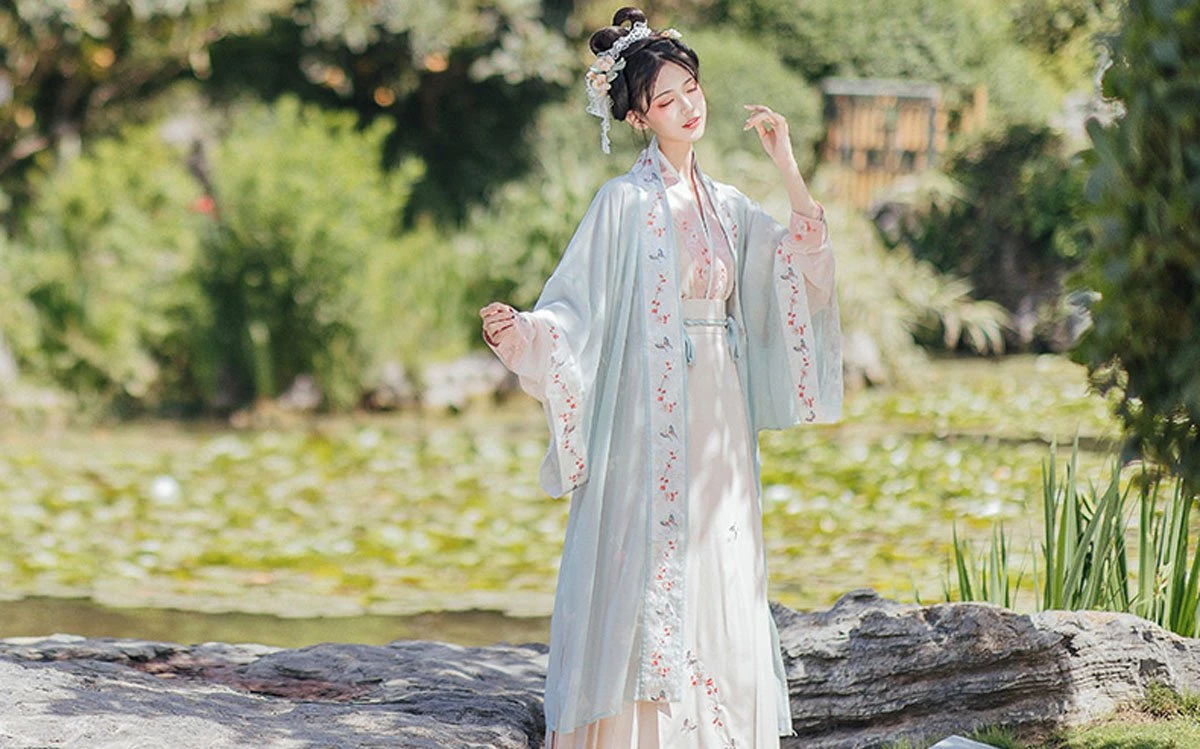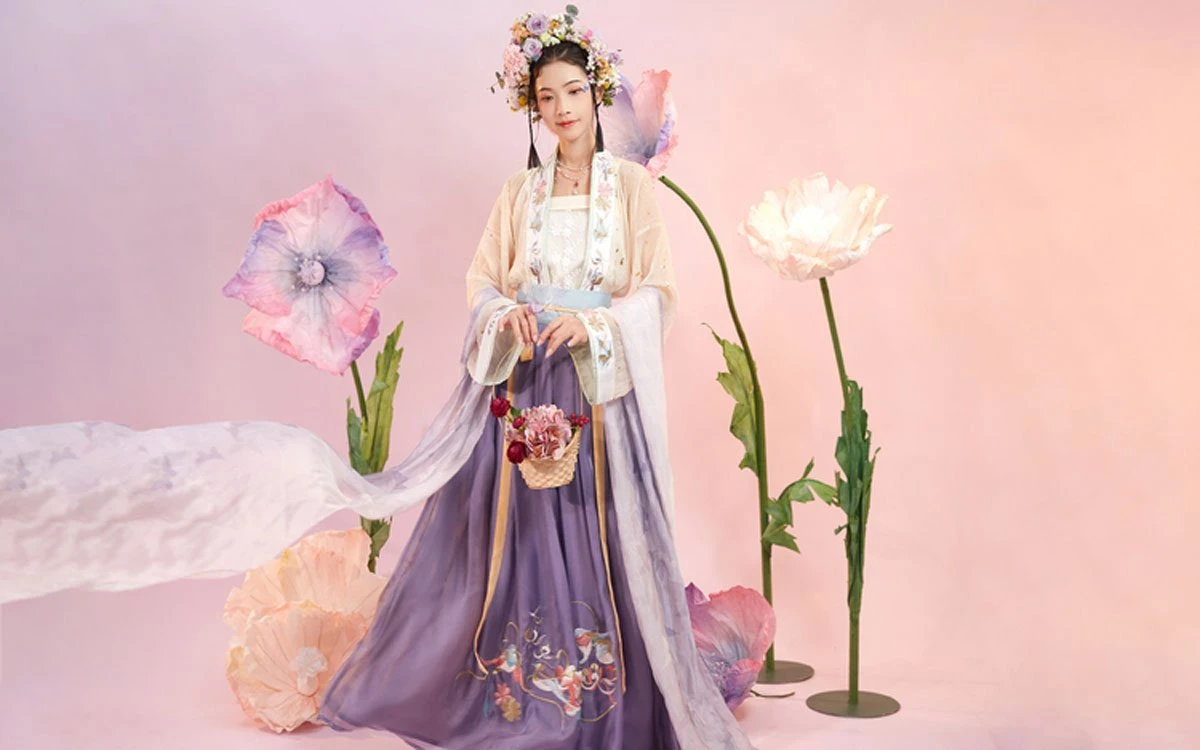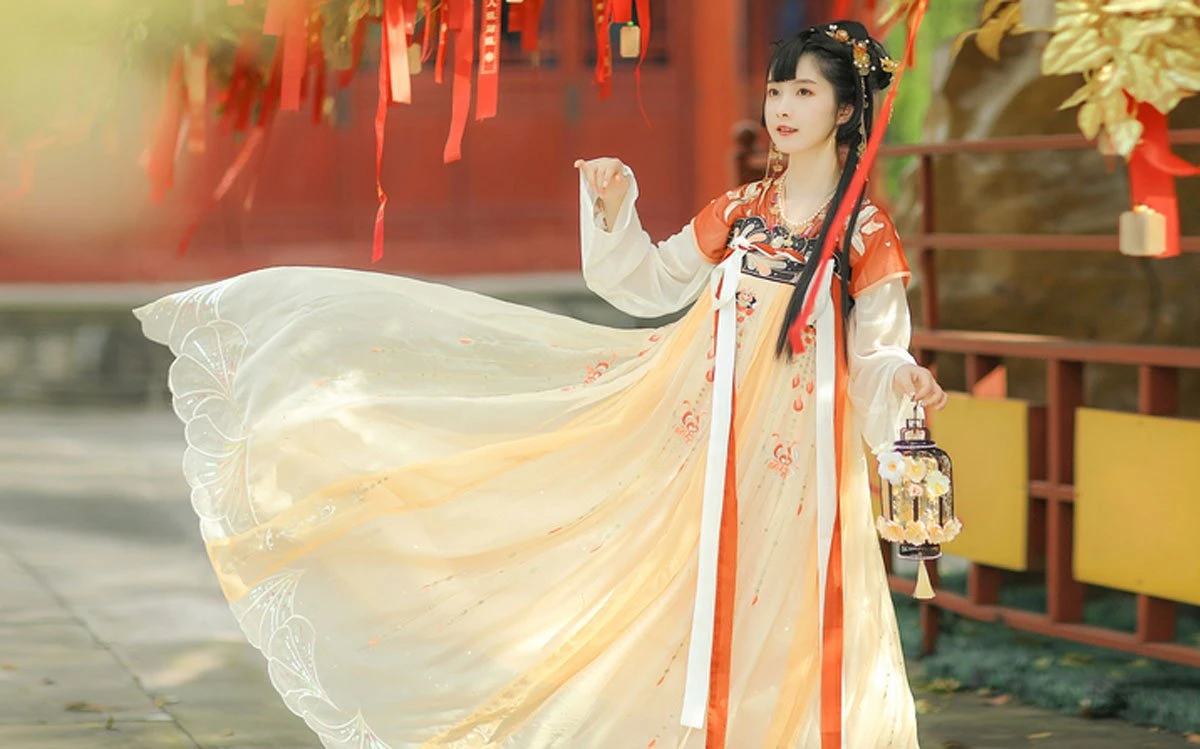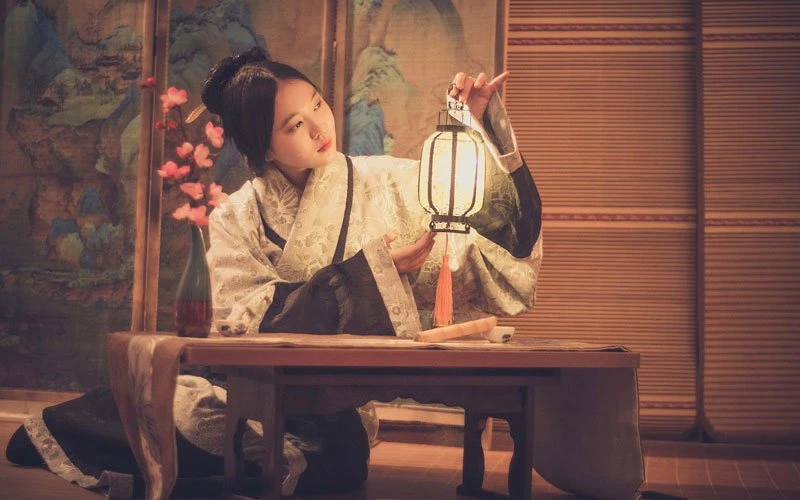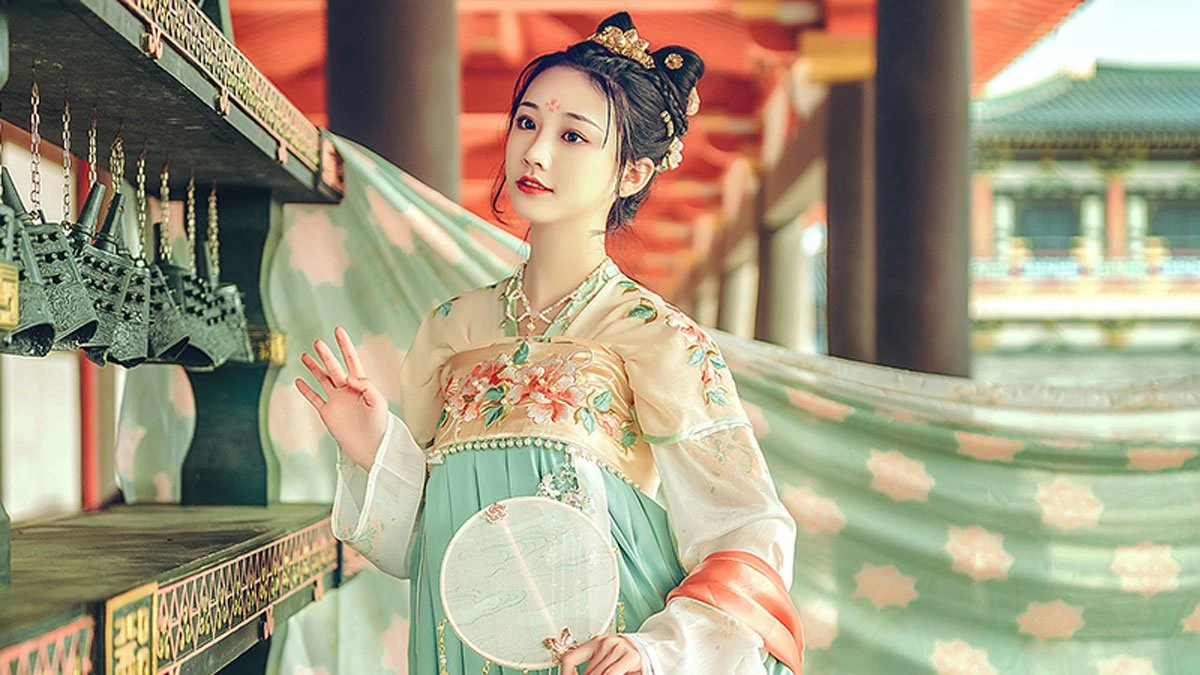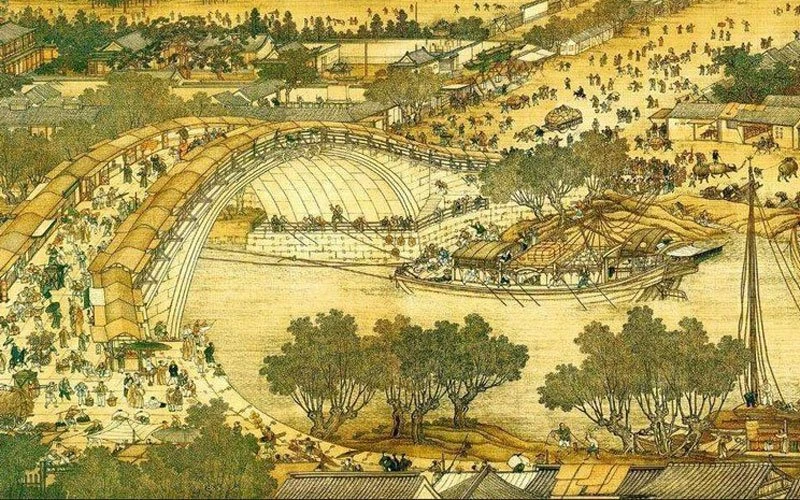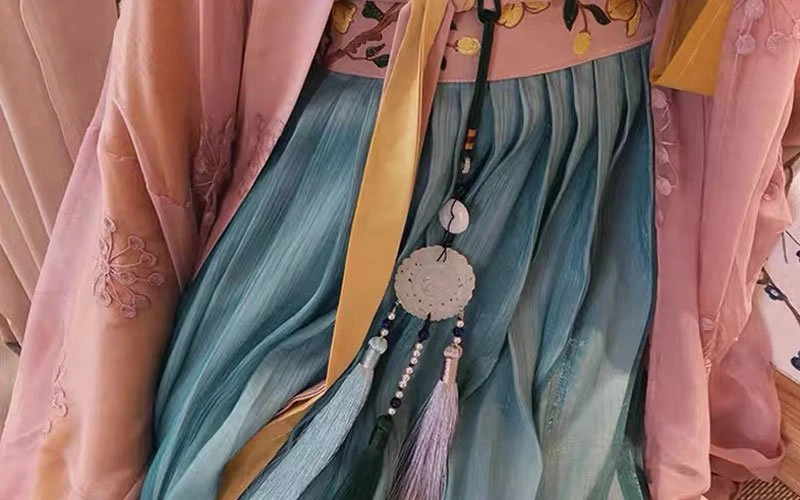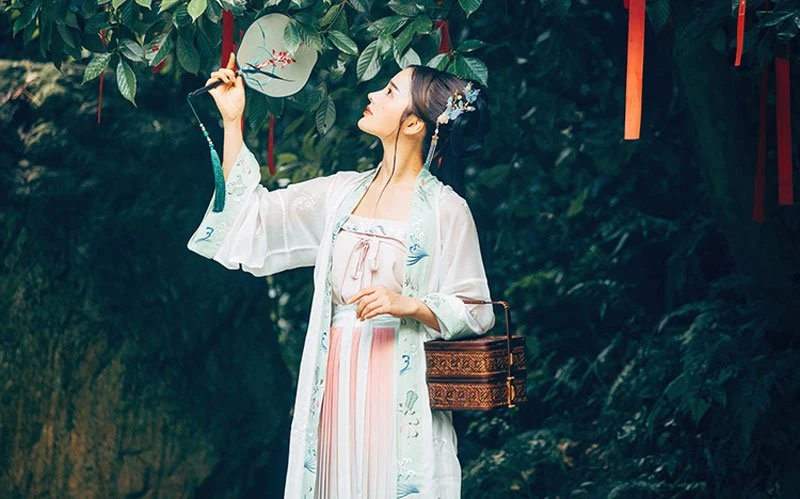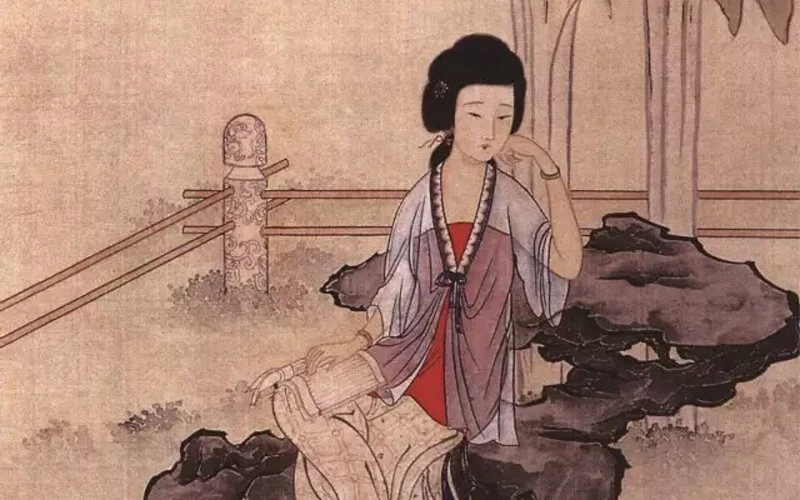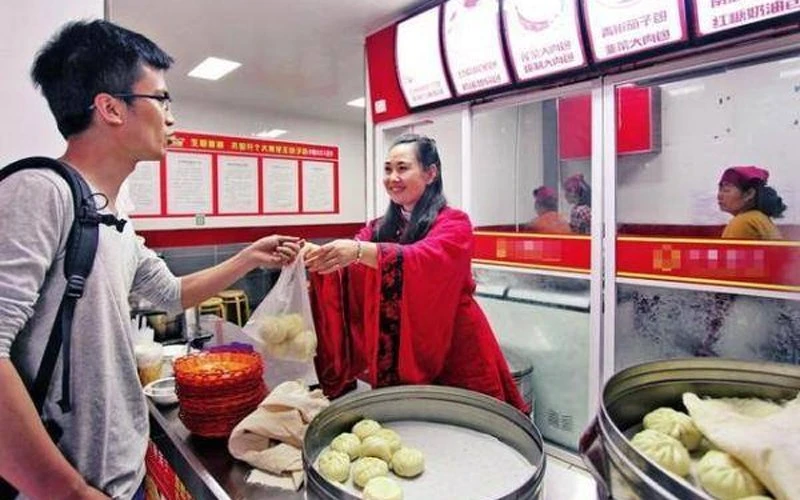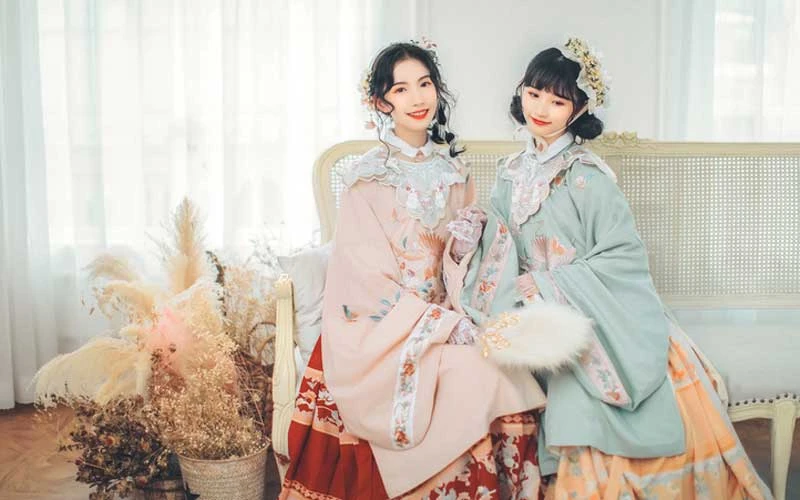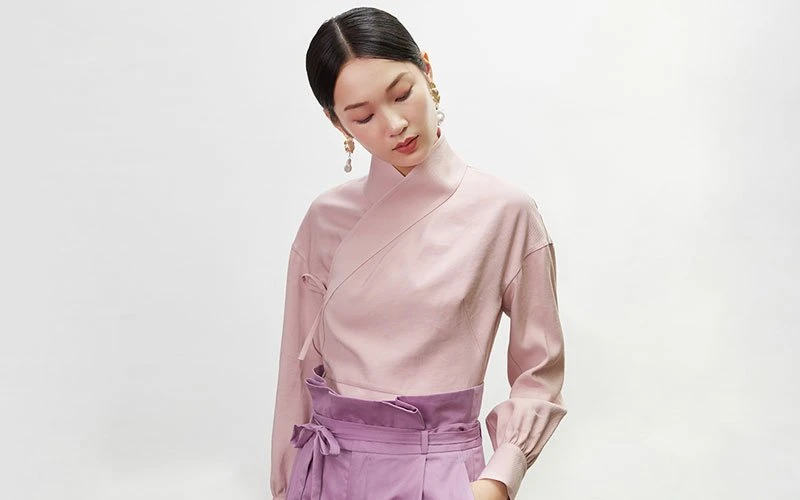Article
搜索结果:
-
Unlock Many Ways to Wear a Beautiful Chinese Costume
The new term begins and we can finally bring our favorite Chinese costumes to school! But before that, you need to think about it: can you really fit that many Chinese costumes in your dorm wardrobe? Most student Chinese costume enthusiasts should have very limited wardrobe space in their dorm, so instead of bringing more than a few pieces, it's better to bring only the best ones to wear. With the right mix and match, you can wear something different every day! Today, we're going to unlock with you the super simple, guaranteed never-fail rule of wearing Chinese costumes! Beizi, Shanzi = Perfect Early Fall Chinese Costume Jacket Beizi and Shanzi are perfect for early autumn Hanfu jackets: Beizi' is just the right length to cover the lower half of the body and perfectly flatters the figure; long Shanzi can be used as a sun-protective shirt or air conditioner shirt, making it a great choice for early autumn; short Shanzi can be used as a playful jacket and can be knotted at the hem like a shirt, showing off the waistline! Tips: Beizi, which has a fancy edge, and Shanzi, which has a lot of embroideries, should be paired with… -
How to Wear Hanfu (9) – Ming Dynasty Ma Mian Skirt
This article introduces a typical outfit from the late Ming Dynasty, which is around the 16th to 17th century for you. Let's see how to wear Hanfu - the long shirt and Ma Mian skirt suit. The top is a long shirt with a standing collar also known as a Mandarin collar, pairing it with a Ma Mian skirt which translates to horse face skirt, it’s the single most representative skirt of the Ming Dynasty. The History of Ma Mian Skirt & the Meaning Behind the Name Ma Mian Qun literarily means Horse Face Skirt, but it actually has nothing to do with a horse’s face, the term 'Ma Mian' in ancient China has another meaning, it refers to the defensive structure that projects outward on city walls, which are located at regular intervals. A Ming Dynasty scholar labelled the rectangular area of the skirt Ma Mian because it looks like the structure. And today we call this type of skirt Ma Mian skirt. Characteristic of Ma Mian Skirt? When the skirt is laid flat, we can see three such structures, we call it Qun Men (裙门) or skirt door today, with another door hiding behind in the… -
How to Wear Hanfu (8) – Ming Dynasty Sheer Fabric Shirt
Today's article introduces a Ming Dynasty style Hanfu suitable for summer, it is a sheer fabric parallel opening Hanfu shirt with a standing collar. Now let’s take a look at the history of this outfit and how to wear it. History of Sheer Fabric Shirt In ancient China, it was quite common for men to be bare-chested during the summer, but of course, this was not the case for ladies, so they would wear fewer layers and sheer fabrics inside of their homes. You might have seen this particular style of Hanfu been called many different names in Chinese, so let’s first quickly go through these names and their origins. The standing collar was a popular element in women’s fashion during the late Ming Dynasty, so according to the naming conventions of the Ming Dynasty, this style can be described as "竖领对襟纱衫", which translates into sheer fabric parallel opening shirt with standing collar. Ladies commonly wore this inside of their homes or in private areas as it is sheer and informal. During the Qing Dynasty, this style was labeled as Pi Feng (披風), which is a type of outerwear, the materials used became thicker and heavier, making them more… -
How to Wear Hanfu (7): Ming Dynasty Jiaoling Aoqun
Aoqun(袄裙), most commonly wore during the Ming Dynasty. Let’s take a look at the individual pieces and how to wear them. The History of Aoqun The word Aoqun translates into a lined top and skirt, it is one of the earliest and most basic forms of Hanfu. This style was developed as early as The Warring States period (475 BC) as seen on these clay figurines, and it evolved throughout the dynasties. By the mid to late Ming Dynasty, it had become the most commonly-seen design for fall-winter clothing among wealthy families and the royal court. There are also many historical relics available for us to study. Wear the Skirt of Aoqun Aoqun is outerwear, so people usually wear inner garments made of cotton or linen material underneath. During the Ming Dynasty, women usually wear Mamian skirts or pleated skirts, this one is a one-piece half-pleated skirt with the pleats only on top, and embroideries on the bottom, as well as on the belts. There are usually two types of one-piece skirts, one style you insert the belt through a hole in the middle, the other style uses an extra set of ties. This skirt doesn’t have either… -
How to Wear Hanfu (6): Ming Style Standing Collar Jacket
As winter approaches, more and more Hanfu enthusiasts are focusing their attention on the Ming style Hanfu. Whereas in the Ming style Hanfu costume, the combination of an Ao (袄, jacket) on top and a Qun (裙, skirt) on the bottom is especially popular. Ao has several types of collars, and today we are focusing on the standing collar today, briefly introduce the history and how to wear it. History of the standing collar Some of you might recognize the standing collar as the mandarin collar, most people think the standing collar is derived from Qing Dynasty Manchurian dress, also known as the cheongsam or qipao, but it is actually originally invented and passed down from the Ming Dynasty, the dynasty before the Qing Dynasty, it is a part of the hanfu system and was later on adapted into Manchurian dresses, and today it’s widely known in the world as the mandarin collar, and recognized as one of the most distinctive features of Chinese clothing. Do you remember this Ming Dynasty painting? Almost every woman and child are wearing the cross collared Aoqun, showing how popular this style was at that time. However, when we look more closely at… -
How to Wear Hanfu (5) – Hanfu Vests: Bijia
Have you noticed the weather doesn’t cool down right away when the fall season starts? It’s a phenomenon sometimes referred to as the “Indian summer” if you live in North America, or "old women's summer" if you live in Europe, and in China, people call it “Autumn Tiger”. It can get really hot during the day but quite chilly at night, so this is a time when people can catch a cold easily. In ancient China, there’s a history of people wearing vests to keep warm during this time of the year, it was believed that the vest was first developed around 2,000 years ago, and later doubled as a fashion statement as time went on. Now let’s take a look at the history of this hanfu and How to wear it. The history of Hanfu vest Short sleeves or sleeveless garments have been around for a long time. The earliest artifacts found in China were from the Warring States Period (475–221 BC). During the Han Dynasty, the terms were coined in one of the oldest dictionaries - The Shiming or "Explanation of Names", sleeveless vests were called Liang Dang (裲裆), half sleeves were called Ban Xiu(半袖) or Xiu… -
How to Wear Hanfu (4) – Song Dynasty Songku
Songku (宋裤) is a kind of traditional Chinese clothing, popular during the Song Dynasty, from year 960 to 1279. Let’s look at the different pieces and how to wear Hanfu - Songku. 1: Wear the undershirt for Songku This is a modern version of a Chinese women’s undershirt with beautiful lotus embroidery, it looks and functions just like a camisole, the adjustable straps make it more comfortable and easier to put on. 2: Wear the Songku This is called Songku, literally meaning Song Dynasty trousers, women generally wore a full-length skirt in ancient China, but during the Song Dynasty, these trousers were very popular. The original version consists of two separate pieces and is more complicated to put on and off, so there's an improved modern version.Original version Songku: The two layers are sewed together and have a zipper on the side, but there was no zipper in ancient China, and also adding this belt as an accessory. And to tie it, make a knot in the center, and then wrap it around each side several more times, then pull it through again while making a small loop and make it tight. Do the same for the other… -
How to Wear Hanfu (3) – Tang Dynasty Qiyao Ruqun
Ruqun (襦裙), is one of the earliest and most basic forms of Hanfu. Ru means top garment, and Qun means skirt. There are two types of Ruqun if categorized by where the skirt is tied, one with the skirt tied above the chest (the chest-high Ruqun - Qixiong Ruqun), and the other one is tied on the waist, and for today, we are going to talk about the waist-high Ruqun - Qiyao Ruqun. Let's take a look at history and how to wear the Qiyao Ruqun. 1: History of Qiyao Ruqun Ruqun is one of the styles under the Yi Chang (衣裳) category of hanfu, Yi Chang basically means top and skirt, although traditional Chinese clothing varied greatly from each dynasty to the next, the few basic styles remained unchanged for the most part. During the Tang Dynasty, other than the iconic Qixiong Ruqun, a variety of Qiyao Ruqun styles were also in favor. In this famous Chinese painting “Night Revels of Han Xizai (韩熙载夜宴图)”, all the musician ladies were wearing Qiyao Ruqun, with bold and vibrant colors. 2: Wear the Top Garment of Qiyao Ruqun Unlike Qixiong Ruqun, you have to wear a camisole with the Qiyao… -
How to Wear Hanfu (2) - Tang Dynasty Qixiong Ruqun
Qixiong Ruqun(齐胸襦裙) is a typical style during the Tang Dynasty, the golden age of China. You can find similar styles of clothing in the famous Tang Dynasty paintings. This is a type of Ruqun with the skirt tied above the breasts and worn with short blouses. Now let’s look at the individual pieces and how to wear Hanfu - Qixiong Ruqun. 1: Wear the Blouse of Qixiong Ruqun The word Ruqun translates into top garment and skirt in Chinese, it is one of the earliest and most basic forms of Hanfu. This blouse has parallel collars and is relatively short to match the long skirt, it is very common to find flower and plant shaped patterns on fabrics during the Tang Dynasty. Put the blouse on first, and tie the knot. 2: Wear the Skirt of Qixiong Ruqun Moving onto the skirt, it is long and pleated, unlike traditional skirts which are usually one piece of fabric wrapped around the body, this modern twist separates the back and front panel and has two sets of ties, it is designed to ensure a better fit and help it stay put on the body. The first step into the center… -
How to Wear Hanfu (1) - Quju Shenyi
Quju Shenyi (曲裾深衣) is a formal outfit with several layers worn mainly for ceremonial purposes. Come and get for details on how to wear Hanfu Quju Shenyi. History of Quju Shenyi Quju Shenyi is a common style during the Qin (秦, 221- 206 BCE) and subsequent Han (汉, 202 BCE- 220 CE) dynasties, you can find similar styles of Shen Yi in various archaeological discoveries. The style introducing today is a short version of the wrap-around Quju Shenyi, designed largely based on unearthed clay and wooden figurines. Most of these artifacts were found inside the Mawangdui (马王堆) archaeological site of the Western Han Dynasty. Unfortunately, after the Han Dynasty, this style decreased in popularity and was later on completely lost. So it’s almost impossible at this point to replicate it. Now let’s take a look at the individual pieces and how to wear them. Wear inner garments of Quju Shenyi The word Quju refers to the curved hem, and Shenyi is one of the most basic forms of Hanfu which is made up of the upper and lower garment, sewed together at the waist. Shenyi is an outer coat, so people usually wear inner garments made of cotton… -
Wearing a Beautiful Chinese Clothing for Our Picnic!
There's a dialogue in Gone with the Wind: "Darling, I want to know why you keep smiling at the kale?" "Because when I think about tomorrow's picnic, I can't help feeling happy." Although we often see in European and American movies, the protagonists in the trip can easily take out a set of wine glasses in the trunk and put a picnic blanket to sit down and chat, but in Chinese movies rarely appear in such scenes. However, you should not think that only Western countries have such a picnic habit. In fact, it has been practiced in China for a long time. It's a good way to say that a literary person with a good sense of humor would never put down " travel" or "picnic", it's actually a sentiment about spring. Let's follow Han Time's lead to learn more about the history of Chinese picnic culture, and learn how to choose the best traditional Chinese clothing for a picnic. The Pre-Qin Dynasties Back in the pre-Qin dynasties, the third day of March was the scene of a large garden party for blind dates. At the Shangsi Festival, there were always "uninhibited" men and women exchanging love at the… -
How to Wear Yunjian & Ancient Chinese Clothing Beautiful in Summer?
Do you want to be a quiet and beautiful girl in ancient Chinese clothing, no matter it's sunny or raining heavily? When you chat with your friends, have a cup of tea, and raise your hand in the air, grace is written all over it. Is this what you wanted for your summer ancient Chinese clothing look? I think this combination of Yunjian with Ming ancient Chinese clothing is just in full satisfaction of what you want! Light-colored Yunjian & Ming Ancient Chinese Clothing With warm purple and soft pink of Yunjian, the temperament is elegant. When the butterflies fly between the sleeves, orchids bloom fragrance and waving their sleeves, we seem to see the heavenly fairies come down to earth. A gradient pink tunic with gradient blue and purple skirt with a layered feel. The peony blossoms on the sleeves and the swallowed Yunjian peplum, incorporated into the windowpane design are sophisticated. Snow is white as a porcelain marigold, reflecting the broken dreams of the star. Chrysanthemums, bamboo leaves, drifting clouds, and fairy grasses are paired with ribbons and gradient Mamian. It is as if a moon is falling, soaking up the thousand years, bringing the coolness… -
Hanfu Dressing Tutorial - How to Wear a Hezi
What is a Hezi?Before the Tang dynasty, undergarments had straps on the shoulders, but in the Tang dynasty, there appeared a kind of undergarment without straps, called "Hezi". This was also determined by the shape of the outer garment: women in the Tang dynasty would tie the skirt high up at the bust, and then tie a wide belt at the lower part of the bust. The shoulders, upper chest and back are bare, and the undergarments are covered with a transparent veil, which makes the undergarments look like they are made of delicate and colorful fabrics. In order to accommodate such wearing habits, the underwear should be strapless.According to the legend, the "Hezi" was invented by Yang Yuhuan when a general accidentally scratched her chest, and Yang Yuhuan feared the Emperor would find out. Then, Yang covered chests with a piece of embroidered cloth. Later, slowly, the Hezi also became popular among the people.Step 1Put the Qixiong dress on first.Step 2Take the front of Hezi and put it in the back.Step 3Pull out the inside lacing first and tie it to the other side of the edge.Step 4Then tie the remaining edge lacing to the other outer lacing.Step 5Take… -
What did Ancient Chinese Peasants Wear?
In modern society, everyone is equal. There is no difference in clothing. What you want to wear is optional. But in ancient times, there was a very strict hierarchy, which clearly stipulated that emperors, nobles, officials, rich people, ordinary people, servants, people of different identities had relevant dress regulations on different occasions. So what are the Chinese peasants wear? As early as the Xia and Shang Dynasties, the hierarchy of clothing has been initially established. In the Zhou Dynasty, a set of the more complete hierarchical system was established, and the form, texture, color, pattern, and ornament of clothing were specified in detail, which became an important part of the etiquette system of the Zhou Dynasty. Peasants, as the largest part of the ancient Chinese common people, mostly wore Duan Da (短打) clothes that could do farm work. Duan Da is a kind of ancient Chinese Hanfu, made of coarse cloth, include with top and lower trousers, the length of the coat is generally above and below the hips and knees. Duan Da is also called "Shu He (短褐, 裋褐)", the word "He (褐)" refers to clothing woven from hemp fabric or animal hair. So, the original meaning of the… -
Why is Wearing Jade Pendant Popular in Ancient Times?
Jade pendant is not new to us. It often appears in ancient costume films and TV plays. I wonder if you are curious about why the ancients wear jade pendants, and why they are made of jade? Today, let's talk about the interesting stories behind the jade pendant. Why are jade pendants all the time and rarely heard of gold or copper pendants? Jade has a special position in the history of Chinese civilization, and it symbolizes the fine character of human nature. With the prosperity of ancient jade culture, a large number of various kinds of jade ornaments appeared in the folk, wearing jade as a trend. Jade materials are divided into several grades to meet the quality requirements of different classes, so that the jade covers a wider range of people. Why wear a jade pendant? The ancients often said: gentleman without reason, jade does not go to the body. Is the ancient man wearing jade pendants just to look good? No, it isn't. Identity symbol: accessories with different texture and appearance often have the function of distinguishing grades. Good wishes: people often give the jade pendant auspicious and wishful, exorcising evil and protecting the body. The function… -
How to Wear Hanfu - Song Dynasty Style
Today, let's talk about how to wear Hanfu in Song Dynasty. Many people think that Hanfu is the clothing of the Han dynasty. In fact, Hanfu is not simply the clothing of which dynasty but contains the clothing of previous dynasties. Now, more and more young people begin to contact Hanfu, and the cultural elements of Hanfu also frequently appear in our sight. The Hanfu of the Song Dynasty is not as elegant as that of the Tang Dynasty, which saves a lot of bright colors. The characteristics of the Song style are more simple and elegant. Beizi is the daily traditional dress of women in the Song Dynasty. The style of Beizi is the straight neck and Duijin (对襟), split under the armpit, tied with cloth at the waist, knee-long at the bottom. Later, it was often worn by women of later generations. Beizi began in Sui Dynasty. In Song Dynasty, the main style of Beizi was large sleeves, on the edge of Duijin, it would be embroidered with some lace, the straight collar was from top to bottom, and it would also be embroidered with lace at the cuff. Wearing method of one-piece Ruqun + Beizi Now the… -
Hanfu History of Ancient Chinese Underwear
In the long years of change, Chinese underwear not only plays the role of covering the body and keeping warm but also carries the long Chinese civilization and records the ancient and mysterious oriental culture. Compared with other traditional Chinese costumes, there are not many descriptions of underwear in ancient Chinese books, which makes it difficult for people to see through thick clothes directly to the thin shelter. Only through precious historical materials can we have a glimpse of ancient Chinese underwear. The history of Chinese underwear has a long history. The following historical clues of underwear are beginning with the Han Dynasty. Chinese Underwear of the Han Dynasty - Baofu (抱腹) The underwear of the Han Dynasty is called "Baofu" or "Xinyi (心衣)". There are records in the historical materials of the Han Dynasty: Baofu, with belts up and down, and wrap the abdomen. The basis of "Xinyi" is "Baofu". The common point of the two is that the back is exposed without a back piece. Wei Jin - Liangdang (两当) The difference between "Liangdang" and "Baofu" and "Xinyi" lies in that it has a back piece, which can be used as both the chest and the back. Most of… -
Hanfu Themed Restaurant - Why Boss Wearing Hanfu Every Day?
Hanfu is becoming more and more popular. More and more people begin to wear Hanfu in their daily life. Today I'd like to introduce two bosses who really integrate Hanfu into daily life. Hanfu theme noodle shop, do you want to try it? Nowadays in Xi'an, there are more and more people wearing Hanfu. Han Tingting (韩婷婷) is the owner of a noodle shop in Xi'an. She just contacted Hanfu and didn't hide her love. In Han Tingting's view, Xi'an is a city with a special historical background, and the Tang Dynasty is one of the most prosperous dynasties in Chinese history. Han Tingting especially likes the culture of the Tang Dynasty and thinks that the clothes of the Tang Dynasty are the most beautiful clothes. She was fascinated by the grandeur and prosperity of the Tang Dynasty and the beauty and delicacy of her clothes. Han Tingting said that she spent three hours every day to make up because the makeup is more elegant, clothing, accessories and so on are also more exquisite, and she is very tired to remove makeup every day. Although tired, Han Tingting enjoys it. She runs a noodle shop near the north square of… -
Chinese Fashion - Wear Hanfu with Auspicious Patterns
Chinese fashion elements have always been closely related to Chinese traditional culture, auspicious patterns and Hanfu also have a very good combination. There are many auspicious patterns in Chinese folk. On the new year's day, or on a festive day, people like to decorate their rooms with these auspicious patterns to express their yearning for a happy life and the celebration of a good day. It is the most common way to extend and extend the natural attributes and characteristics of some animals and plants. For example, dragon and Phoenix are used to symbolize power. From ancient times to now, Dragon is the auspicious God of ancient China. It is regarded as the totem of the Chinese nation and has supreme status. In Chinese, pronunciation often corresponds to several Chinese characters, so using the same and similar pronunciation can achieve a certain rhetorical effect. These auspicious patterns have been popular from the Han Dynasty to Ming Dynasty, and they are mostly seen in ancient porcelain of the Ming and Qing Dynasty. Today, Chinese fashion elements are constantly integrated into our modern life, and our Hanfu and auspicious patterns are also very well combined. Let's follow the steps of Hanfu Time… -
Hanfu Guide | How to Wear Hanfu on Weekdays
"What should I wear tomorrow", it's like an epic puzzle, just like people asking you "what to eat at noon every day". According to a survey, in fact, many people want to try to wear Hanfu to work. Even if they are new to Hanfu, they also want to try more Hanfu styles on different occasions, but traditional Hanfu is too eye-catching and time-consuming. What should we do? Hanfu Time have prepared #How to wear Hanfu on weekdays# for you, made a plan for you to wear Hanfu on weekdays. Monday Monday must be a nightmare for many people. On this day, you need some stylish clothes to decorate your neat and generous office style. Focus on simple collocation, black and white sense of conciseness, and win in detail. Wear Examples: Tuesday Continuing the style of Monday, the style in Tuesday's dress can be slightly gentle, mainly comfortable and fashionable, adding some fresh colors, and the decoration of dark lines. It's very suitable for matching with wide-leg pants. Wear Examples: Wednesday On Wednesday, you can bring yourself and your colleagues a more comfortable mood. At this time, you can wear more outstandingly, even in bright colors and printed skirts. Wear Examples:…
